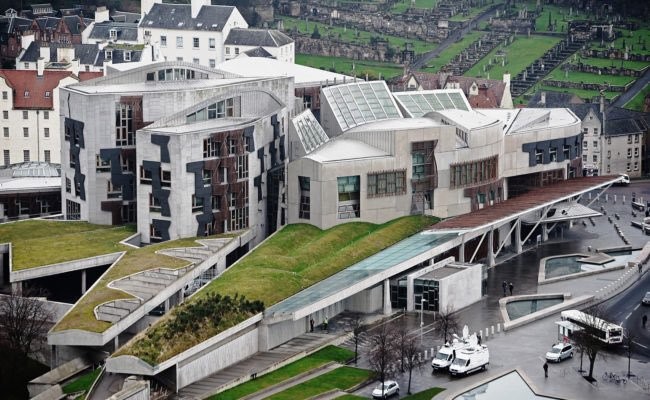May's blog come from Marili Sotiriou, a Masters student at the University of Edinburgh, who recently began a 4-month research project on the energy conservation benefits of green roofs:
As part of my MSc dissertation and with the help of my supervisors, Dr Jennifer Carfrae (SRUC) and Dr Lynette Robertson (MEARU, Glasgow School of Art; Nature Harmonics Research and Consultancy), I recently began a 4-month research project on the energy conservation benefits of green roofs, focusing on one of Edinburgh’s most prominent extensive green roofs at the Scottish Parliament. The overall objective is an assessment of the impact of the existing green roof on energy balance and building energy efficiency , and to assess potential gains of integrating solar panels.
Green roofs can provide us with many advantages over conventional ‘non-living’ roofs, including storm water retention, wildlife habitat, and energy conservation, however research in the Scottish context, which can be used to inform decision making and design, is sorely lacking. Further, an benefit which has only developed more recently is energy production through incorporating solar panels in combined ‘biosolar’ green roof systems. As photovoltaic (PV) panels shut down when temperatures get too high, the lower temperatures of green roofs compared to conventional roofs offer a preferable environment for solar energy production. In addition, PV panels create microclimate conditions on the green roof (e.g. shade) which that can enhance biodiversity.

Aims and Objectives
Energy performance of the green roof will be determined from: (i) primary data collection (temperature and moisture content, insulation properties of the roof) using thermal camera, thermocouples, portable weather station, and (ii) secondary energy data provided by the Scottish Parliament (reducing the data to that particular part of the building that is under study).
A statistical analysis (multivariate) will be undertaken prior to determining the energy performance of the green roof, and finally, a simulation model will be set up, using EnergyPlus, a building energy simulation software that can calculate the energy consumption of a building (Hui and Chan, 2011). A comparison of the energy performance of four different roof types can be established. The types of roofs under study using this model will be:
1) Bare Roof
2) Green Roof
3) Roof with PV
4) Integrated system